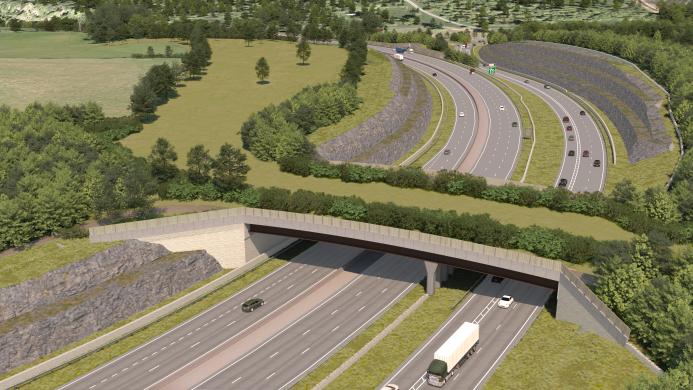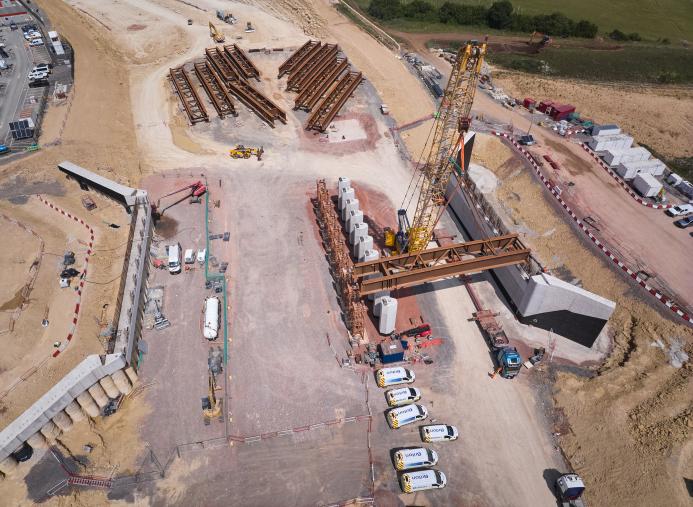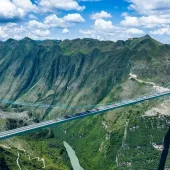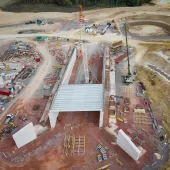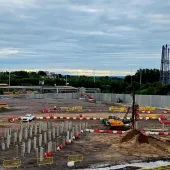Gloucestershire’s green bridge takes shape over A417
Construction is underway on one of the UK’s largest green bridges, as National Highways begins lifting ten 60-metre steel beams into place across the new A417 Missing Link in Gloucestershire. The structure, known as the Gloucestershire Way bridge, will combine major concrete and steel engineering with biodiversity-focused design, delivering the first crossing of its kind in the county.
Spanning eight lanes of dual carriageway, the 37-metre-wide bridge will be used by walkers, cyclists, horse riders and local wildlife including deer, badgers, voles, insects and birds. Concrete abutments and a bridge deck will support extensive landscaping – including 27 metres of calcareous grassland and native hedgerows – designed to integrate the structure into the Cotswold landscape.
“We’re really proud of the environmental work being carried out as part of this landscape-led project,” said Steve Foxley, project director at National Highways. “This is our fifth green bridge and a fundamental part of our approach to combining vital transport upgrades with world-class environmental practices.”
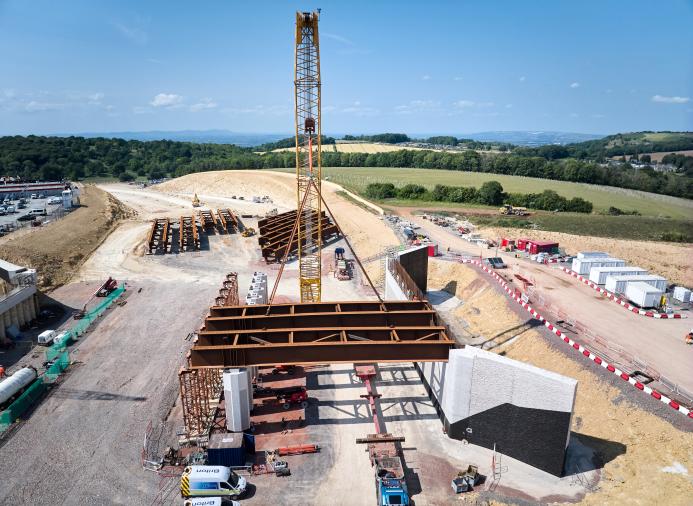
The green bridge is part of a wider £460 million upgrade to the A417 between Brockworth and Cowley, designed to improve safety, reduce congestion, and reconnect fragmented habitats across the Cotswolds Area of Outstanding Natural Beauty.
Kier’s senior ecologist Natasha James said: “We have a responsibility to ensure we’re leaving a positive legacy and delivering ecological benefits. This bridge will become a valuable habitat feature for many species, while improving access and connectivity for people.”
The bridge will be seeded with calcareous grasslands and planted with hedgerows this autumn. Once planting is complete, a five-year maintenance period will follow to help the new habitats establish. The structure builds on successful green bridges delivered by National Highways over the A556, A21, A30 and M25 in recent years.
Other concrete and sustainability highlights from the A417 scheme include:
- Dual-use concrete crossings to allow traffic to pass over the main road while preserving habitat links
- On-site recycling of excavated rock using six crusher plants to reduce material imports
- Dedicated bat structures, bird fencing, and extensive animal translocation programmes
- 7.5km of traditional drystone walling to preserve regional character and boost biodiversity
- Repurposed sections of the A417, turned into accessible byways planted with native species
The Gloucestershire Way bridge and wider A417 Missing Link scheme are expected to complete in 2027.
